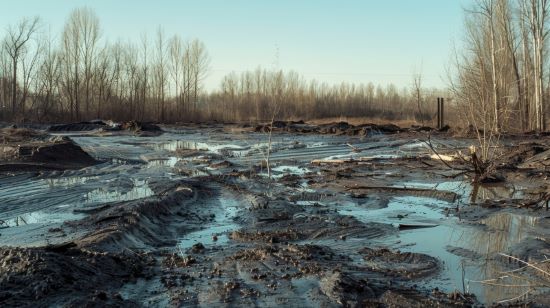
If we can capture much of the carbon waste we produce from mining and industrial processes, would that make sense for both business and the environment? A U.S. Congress-mandated report produced by the National Academies of Sciences, Engineering and Medicine (NAS) focuses on what it calls the “oft-neglected aspect of the transition to net-zero emissions: the carbon embedded in the essential products used in daily life, such as chemicals, plastics, and construction materials.”
It states that while we can decarbonize how we produce energy by moving away from coal and burning other fossil fuels, zero-carbon alternatives for other essential applications will be harder to find.
In industries where carbon will remain crucial, the report notes, “We specifically must find sustainable ways to recycle and reuse carbon wastes, especially those causing the planet the most harm, to continue to produce many of the products needed for everyday life.” The report focuses on the two most prevalent carbon wastes our industrial society produces: carbon dioxide (CO2) and coal waste.
Using CO2 Rather Than Releasing It Into the Atmosphere
CO2 is a potent greenhouse gas (GHG) that accumulates in the atmosphere. The gas emitted from a coal-fired or natural-gas power plant today will hang around in the atmosphere for 300 to 1,000 years states a NASA science report. Investments have been made in capturing CO2 from emission sources or directly from the air. So far, a few industrial emitters have added CO2 capture to their facilities.
A few dedicated CO2 capture plants have been operating for a few years but the operative word here is “few.” The International Energy Agency notes that by 2030 based on plans to build many more, CO2 capture will amount to just over 430 million tons. Presently, we produce 26 billion tons annually. If we hold the line on annual CO2 contributions to the atmosphere, at best we will be capturing 1.6%. That’s hardly a dent in the carbon deficit.
As I read through the NAS report it occurred to me that the U.S. Congress in requesting this study was putting the cart before the horse. Maybe in the Congress’s mind, it wanted to encourage more CO2 capture by showing how utilization could be a good business proposition helping to advance the deployment of resources, infrastructure and facilities to turn CO2 conversion into a for-profit business.
Repurposing Coal Waste
The other carbon that the report focuses on is coal waste. The U.S. economy until recently ran largely on coal mined in Appalachia and the West. Today, coal production is in decline but coal waste remains a big environmental problem. It is a contaminant that fouls the water and land in Appalachia contributing to higher cancer rates and other diseases in that region. Long overlooked, coal waste that mining companies dump from mountaintops into valleys is an environmental eyesore in need of immediate remediation.
One possibility is reutilization. Coal waste could conceivably become an industry on its own and could kickstart a growing carbon industrial sector. What can be done with the gas is one thing. What can be done with coal waste is another.
Coal waste can become an immediate local source of:
- Mined for rare earth elements, cobalt, lithium and nickel, all critical to the manufacturing of electric batteries.
- Carbon fibre raw material to be woven, shaped and 3D printed for use in many fields and applications.
- Materials for construction including asphalt, drywall, concrete and cement.
By using coal waste and turning it into products it means the carbon can be embedded and sequestered for life. Products created from CO2 and coal waste need to be recyclable and capable of being repurposed.
Still Missing from the Carbon Equation and This Report
What surprised me in the NAS report is what was not included as part of viable CO2 use, creating electricity by using the gas to generate electricity. Energy Dome, an Italian company that I recently wrote about is using the CO2 produced by its clients to generate power. The company liquefies the CO2 on the client’s site and uses heat to create a phase change turning it back into a gas. In a closed system, the gas under pressure drives a turbine and generator which powers a 200 Megawatt-hour battery. This is a small-footprint solution that can easily be fit into existing utility, steel, aluminum and concrete production sites.
What else is missing from this report? As I stated earlier, there is too much cart at the front, rather than addressing the need for the CO2 capture horse. It is the capturing of CO2 that needs to be front and centre to create a successful carbon industrial sector and after-market.
The NAS report needed to include the winding down of CO2 sources of production while coming up with its creative solutions for using as much of the captured gas as possible. The latter requirement means a rapid build-up of carbon capture facilities, the building of a transportation infrastructure of pipelines to move the captured gas to where it can become a raw material to be permanently sequestered in end products or used in closed-cycle applications.








